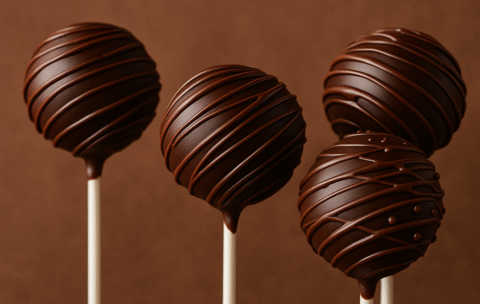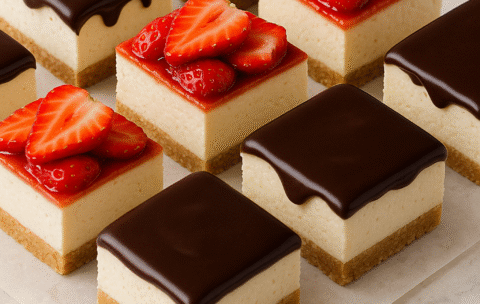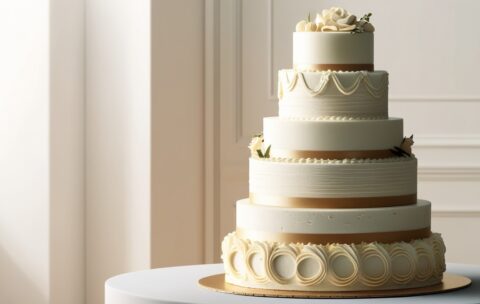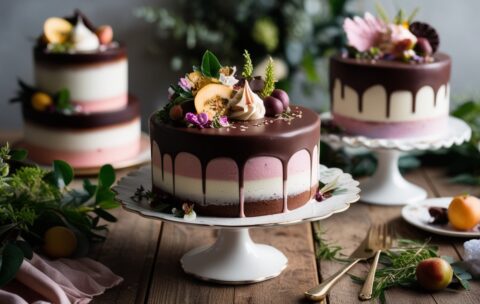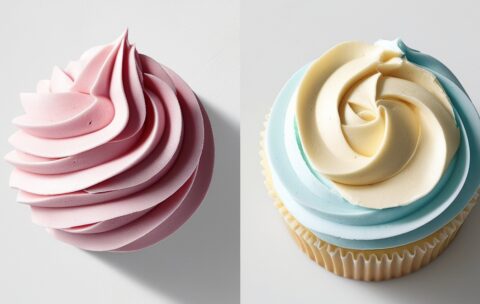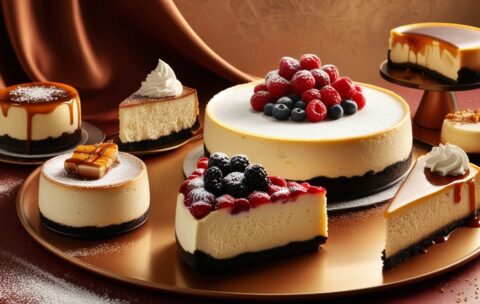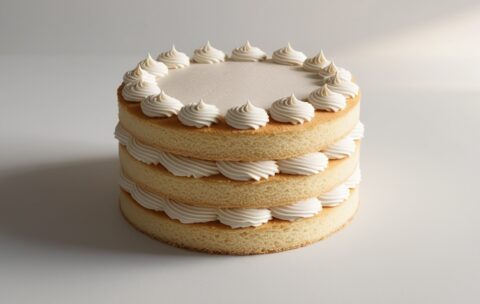Popular Topics
cake pops
cheesecake bars
Sugar Artistry
churro cake bites
no-bake desserts
Gluten-Free Flours
cinnamon sugar
Smooth Finish Techniques
dessert assembly
Cake Stability
Gateau Techniques
Entremet Construction
DessertRecipes
layered cheesecake
Royal Icing Techniques
easy baking
Gum Paste Florals
American Buttercream
French Buttercream
dessert bite
NoBakeRecipes
party snacks
dessert bites
single-portion baking
party treats
tempering chocolate
Vegan Baking
ChocolateCake
warm spices
Sugar Flowers
cream cheese frosting
Mirror Glaze
Buttercream Variations
Cake Decorating
PastryFundamentals
Layer Cakes
Cake Assembly
BakedDesserts
Buttercream & Ganache
Baking Refinement
Professional Techniques
flavor pairings
CakeDecor
Egg Replacements
VictoriaSponge
international cakes
Color Blending & Airbrushing
Panettone
Middle Eastern sweets
NakedCake
holiday cakes
SemiNakedCake
Cake Troubleshooting
CakeDesign
petite cake design
PastrySkills
MinimalistDesserts
Decorative Piping
nut variations
Genoise
chocolate mousse
sponge bases
BakingBasics
Popular Instructors
All Cakes Courses
Layer Cake Construction & Filling Strategies
Master the art of building perfectly leveled layer cakes and …
What you'll learn
Baking for Uniform Layers: How to prep pans (lining, spray), adjust batter distribution, and use baking strips or temperature hacks for flat, even cake tops.
Leveling & Stacking: Knife vs. cake leveler methods; applying a thin “crumb coat” of frosting; inserting dowels or straws for multi-tier support; stacking layers without slippage.
Filling Varieties & Textures: Selecting between custards, curds, fruit compotes, ganaches, buttercreams, and mousse fillings—considering sweetness, moisture control, and pairings (e.g., raspberry curd with chocolate cake).
Preventing Leaks & Weeping: Techniques for sealing cake layers (buttercream dam, chocolate collar), ensuring fillings stay contained; chilling strategies to set fillings before final coating.
Flavor Harmony & Balance: Matching cake flavor (vanilla, chocolate, spice) with filling profiles (tart, sweet, creamy) to avoid one element overpowering another; adjusting sweetness levels.
Finishing & Presentation Prep: Applying a smooth final coat of frosting or ganache; creating optional decorative borders or piped accents; slicing tips for clean, even servings.
Vegan & Gluten-Free Cake Innovations
Explore cutting-edge techniques for creating delicious cakes that are both …
What you'll learn
Flour Blends & Ratios: How to create balanced gluten-free flour mixes (almond, oat, rice, sorghum) and adjust for different cake styles (sponges, pound cakes, chiffon).
Binder Techniques: Use flaxseed meal, chia gel, and aquafaba as egg replacers to provide lift and cohesion; troubleshoot sticky or crumbly batters.
Moisture Control: Incorporate nondairy milks (almond, oat, coconut), fruit purées, and oil ratios to maintain tenderness without a gummy crumb.
Sweetener Alternatives: Work with maple syrup, coconut sugar, and date paste; understand how liquid versus granulated sweeteners affect texture and browning.
Flavor Innovations: Develop unique cake profiles—matcha-coconut layer, cacao-beet marble, citrus-herb infusion—using natural colorants and extracts.
Frosting & Filling Adaptations: Prepare stabilized coconut whipped cream, aquafaba meringue buttercream, and avocado-chocolate ganache; learn to pipe and decorate without dairy.
Baking Adjustments: Modify oven temperatures, bake times, and pan preparations for even rise and minimal collapse in vegan/gluten-free batters.
Troubleshooting: Identify and fix issues like dense crumb, dryness, or collapse; use gentle folding, resting times, and moisture tests to ensure success.
What you'll learn
Buttercream Foundations: Basic ratios for American, Swiss, Italian, and French buttercreams; key differences in texture, sweetness, and stability.
Temperature Control: How to handle ingredients (room-temperature vs. chilled butter, sugar syrup stages) to prevent graininess or separation.
Flavoring & Infusing: Incorporating extracts, fruit purées, ganache, or cocoa; balancing sweetness and fat without compromising consistency.
Coloring Strategies: Best practices for gel vs. powdered colors; preventing “bleeding” or streaking when blending multiple hues (e.g., ombré or watercolor effects).
Spreading & Smoothing: Techniques for achieving glass-smooth sides (bench scraper, icing turntable, hot spatula method) and avoiding common marks or air pockets.
Piping & Decorative Textures: Creating rosettes, ruffles, ruffles, basketweave, petals, and multi-tone piping (hidden two-tone tips, reversible bags).
Stabilizing for Warm Climates: Adjusting recipes (adding meringue powder or corn syrup) so buttercream holds shape in humid or warm environments.
Troubleshooting Common Issues: Fixing grainy buttercream, curdled mixtures, overly soft or too-stiff icing; rescue methods (re-creaming, adjusting sugar syrup).
Decadent Cheesecakes: From No-Bake to Baked
Dive into the world of indulgent cheesecakes with this comprehensive …
What you'll learn
No-Bake Cheesecake Fundamentals
How to prepare a sturdy, crisp graham cracker (or digestive cookie) crust without baking
Proper gelatin blooming and incorporation techniques for a stable filling
Folding methods to achieve a light, airy texture without deflating whipped cream
Creative topping ideas: fruit compotes, chocolate ganache, caramel drizzle
Baked Cheesecake Mastery
Techniques for preventing cracks: water bath assembly, gentle mixing, and controlled cooling
How to achieve an ultra-creamy, custardy center by managing oven temperature and bake time
Making and baking a fail-proof graham/digestive cookie crust
Flavor variations: lemon zest infusion, pumpkin swirl, poppy seed blends, and espresso accents
Decoration & Presentation
Piping whipped cream rosettes around the rim with a star tip
Arranging fresh fruit in radial patterns and glazing for shine
Adding textured accents: nut crumbles, chocolate shavings, and edible flowers
Troubleshooting & Tips
Solutions for common issues: cracked tops, dense centers, runny fillings, and weeping
Ingredient substitutions (e.g., gluten-free crust options, non-dairy alternatives)
How to scale recipes up or down for 6-inch mini cheesecakes, pie-sized “cheesecake tarts,” or 10-inch party-size
Fundamentals of Classic Sponge Cakes
Unlock the art of crafting light, airy, and tender sponge …
What you'll learn
Egg-Based Leavening Principles
How egg foam structure traps air for lift
Differences between whole-egg, yolk-only, and white-only foams
Impact of sugar timing on foam stability
Classic Sponge Variations
Genoise: Creating a warm, melted-butter-enriched sponge with a tight crumb
Victoria Sponge: Whisking eggs and sugar to ribbon stage, then folding in butter and flour
Chiffon: Combining whipped egg whites with oil-based batter for ultra-light texture
Mixing & Folding Techniques
Whisking by hand vs. stand mixer: pros, cons, and timing adjustments
Proper folding to avoid deflating the foam—using rubber spatula vs. whisk
Identifying the “ribbon stage” and when to stop folding
Pan Preparation & Baking
Choosing the right pan: bottom-lined vs. unlined; tube pans vs. straight-sided
Lining, greasing, and tapping techniques to prevent sticking
Oven temperature calibration and timing for optimal rise
Troubleshooting Common Issues
Deflated cakes: Causes (undercooked foam, overfolding, abrupt temperature changes) and fixes
Uneven surfaces or excessive doming: Adjusting rack position and heat distribution
Dry or gummy crumb: Balancing moisture with ingredient ratios
Finishing & Assembly
Leveling and slicing sponge layers for clean, even stacks
Simple syrup soaking for added moisture without collapsing structure
What you'll learn
Ingredient Essentials
Understanding Dutch-process vs. natural cocoa
Choosing between all-purpose, cake, and bread flour
Role of oil vs. butter for moisture
Batter Techniques
Creaming method for light layers
One-bowl “melted-chocolate” method for dense cakes
Whipping egg whites for chiffon-style chocolate cake
Baking & Structure
Oven temperature calibration and its impact on rise
Tips for level cakes: pan prep, baking strips, and testing doneness
Troubleshooting: sunken centers, gummy crumbs, uneven tops
Fillings & Frostings
Crafting silky chocolate ganache (TABLE BELOW)
Whipped chocolate buttercream vs. Swiss meringue buttercream
Simple whipped cream and mousse fillings
Decoration & Assembly
Stack and level layers with a cake comb and turntable
Smooth crumb coat, final coat, and ganache drip techniques
Simple piping (star tips) and fresh-fruit accents
Frosting Type Key Ingredients Best Use Case
Chocolate Ganache Equal parts dark chocolate & cream Drip cakes, glossy finishes
Swiss Meringue Buttercream Egg whites, sugar, butter, cocoa Stable layer cakes, rosettes
Whipped Chocolate Buttercream Butter, cocoa powder, powdered sugar, milk Light filling, quick spreads
Cinnamon Sugar–Coated Churro Cake Bites
“Cinnamon Sugar–Coated Churro Cake Bites” is a fun, fast-paced mini-course …
What you'll learn
How to bake and crumble a base cake optimized for cake bites
Ratio of cake crumbs to filling for ideal texture and binding
Frying vs. baking methods for a golden, light crust
Blending and heating cinnamon-sugar coating for crisp adhesion
Shaping techniques for uniform, crack-free bites
Serving and storage tips to keep bites fresh and crunchy


